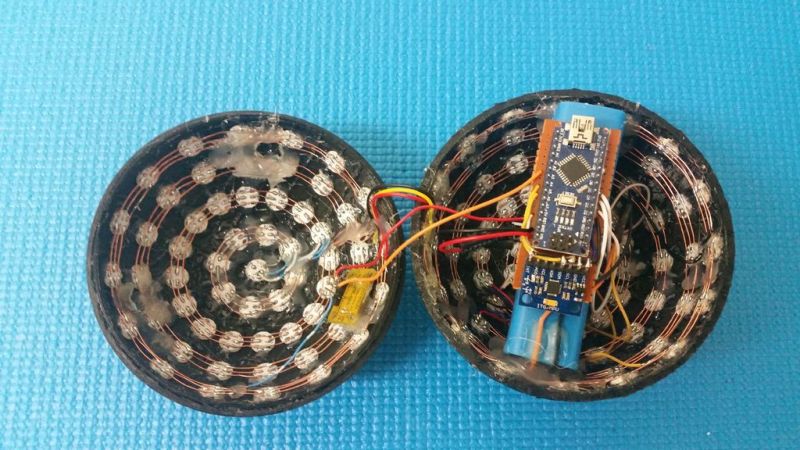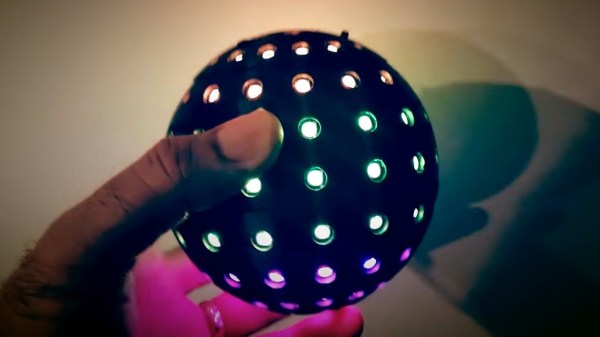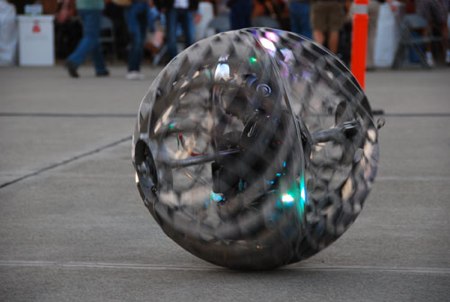Disco balls take a zillion mirrors glued to a sphere and shine a spotlight on them. But what if the ball itself was the light source? Here’s a modern version that uses addressable LEDs in a 3D-printed sphere that also hides the electronics inside the ball itself.
Check out the video below to see the fantastic results. It’s a Teensy 3.6 driving a whopping 130 WS2812 LEDs to make this happen. (Even though the sphere has the lowest surface area to volume ratio.) There’s even a microphone and an accelerometer to make the orb interactive. Hidden inside is a 4400 mAh battery pack that handles recharging and feeds 5 V to the project.

For us, it’s the fabrication that really makes this even more impressive. The sphere itself is 3D printed as four rings that combine to form a sphere. This makes perfect spacing for the LEDs a snap, but you’re going to spend some time soldering the voltage, ground, and data connections from pixel to pixel. In this case that’s greatly simplified because the LEDs were sourced from AliExpress already hosted on a little circle of PCB so you’re not trying to solder on the component itself. Still, that’s something like 390 wires requiring 780 solder joints!
We love seeing an LED ball you can hold in your hand. But if you do want something bigger, try this 540 LED sphere built from triangular PCBs.
Continue reading “Disco Ain’t Dead: Blinky Ball Makes You Solder Inside A Dome”















